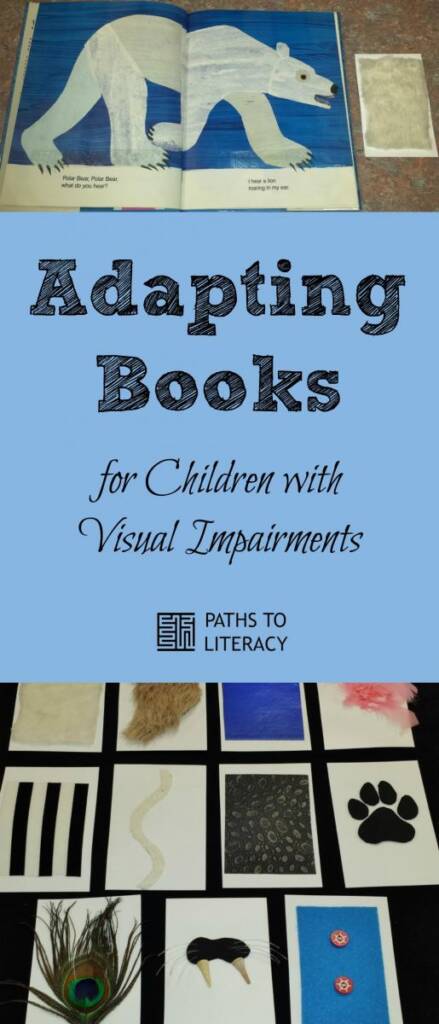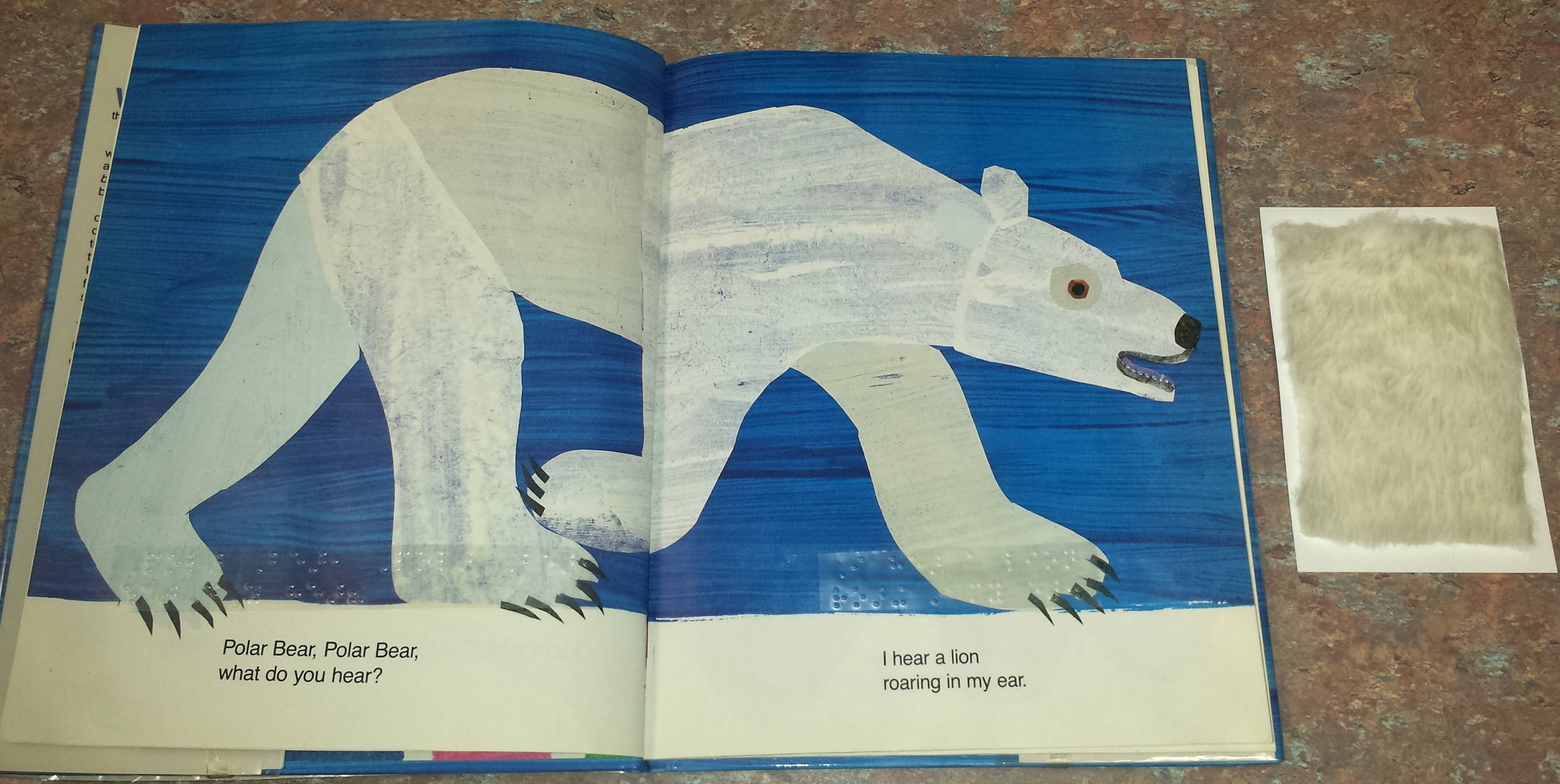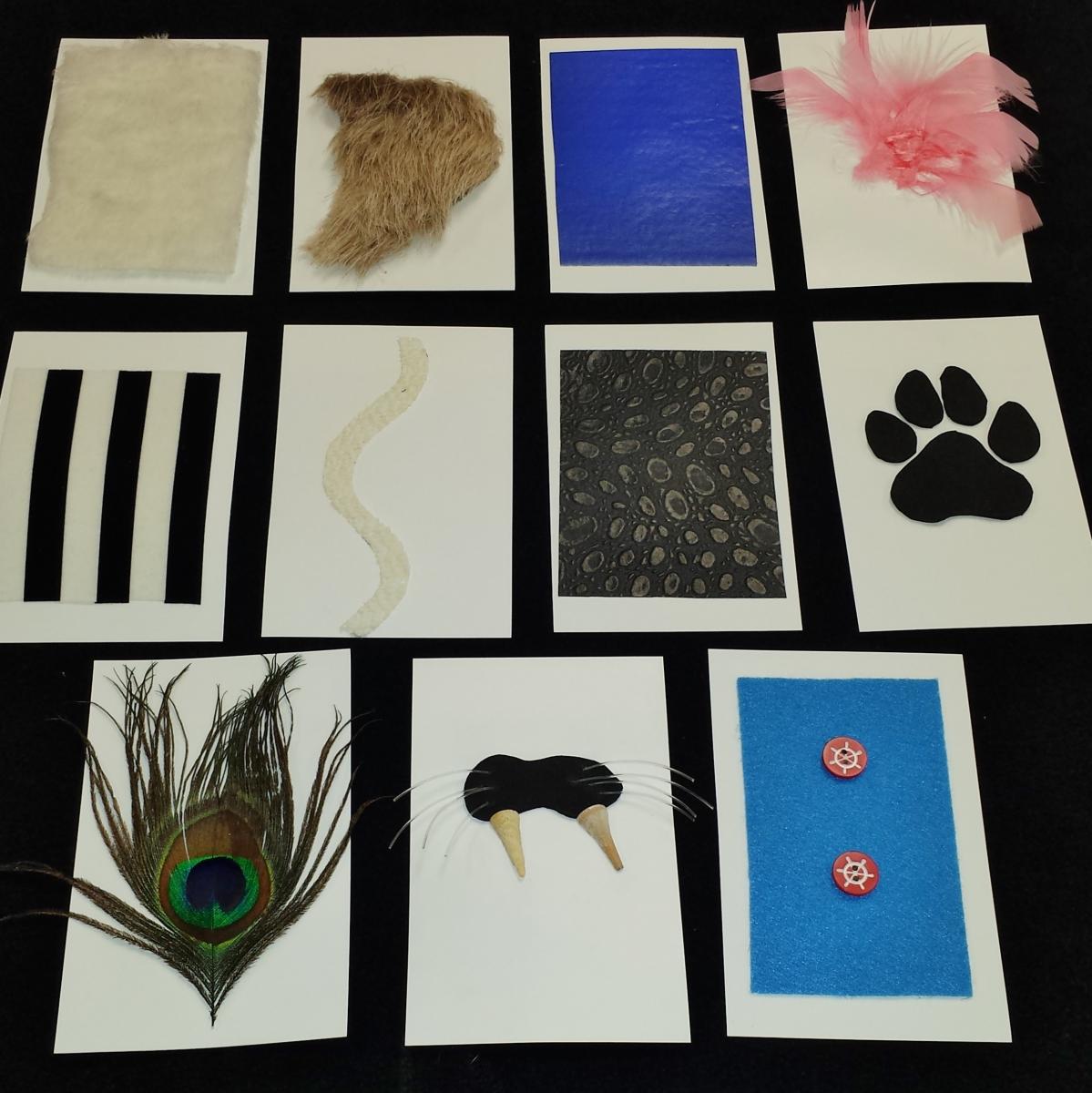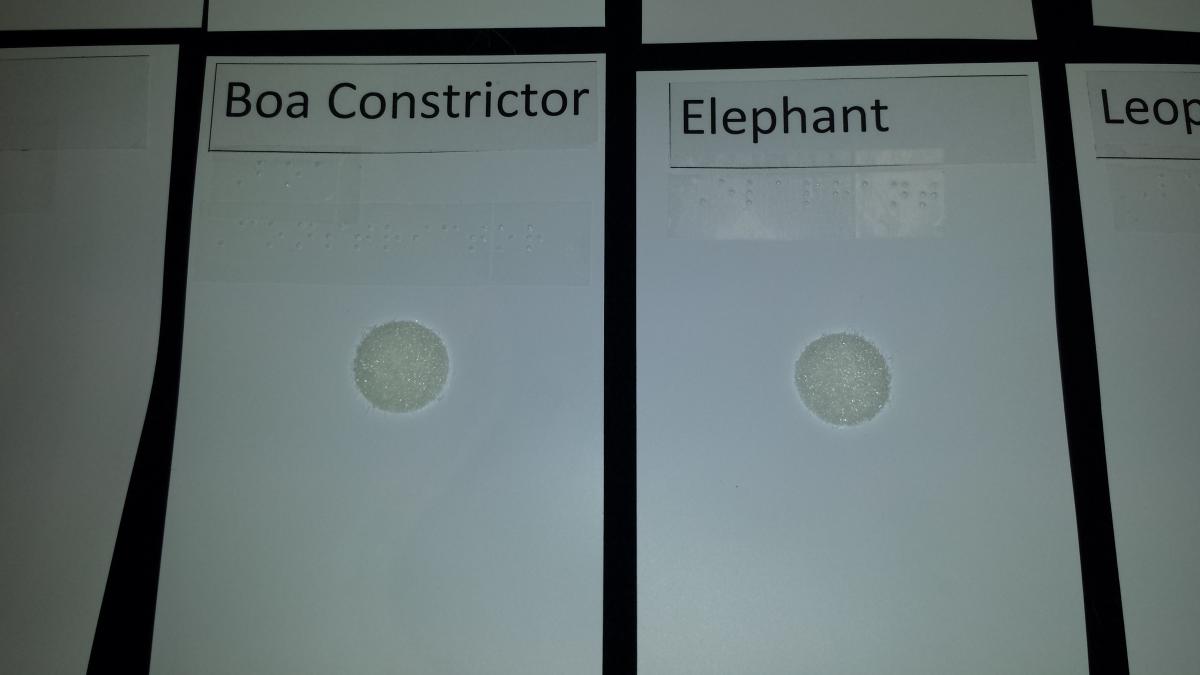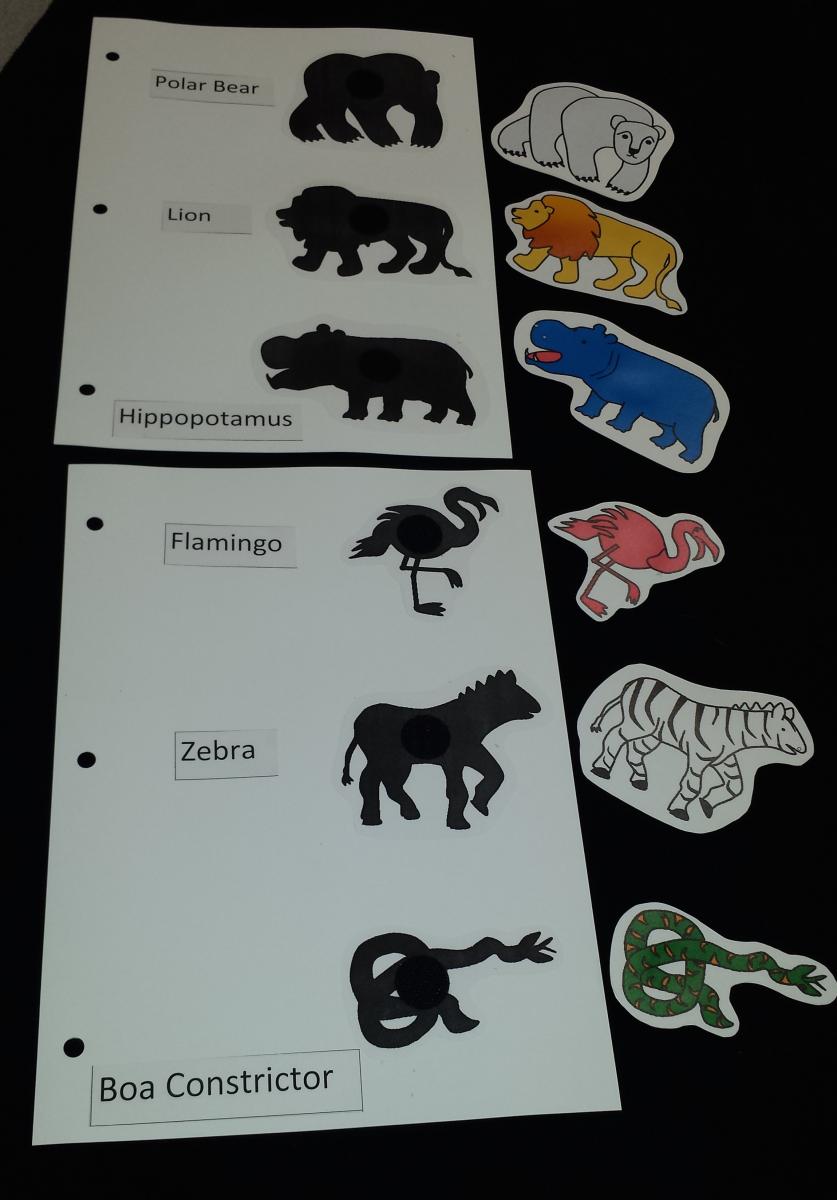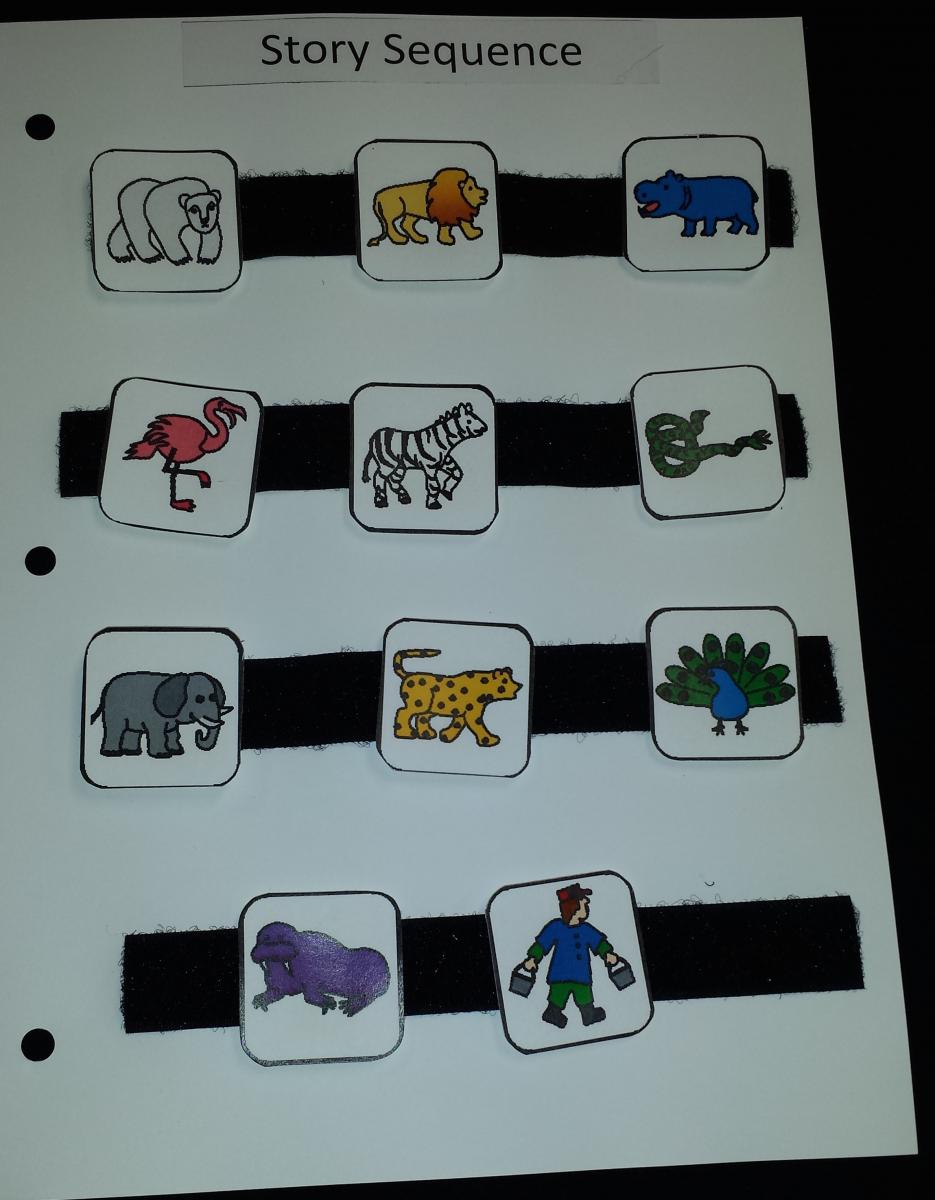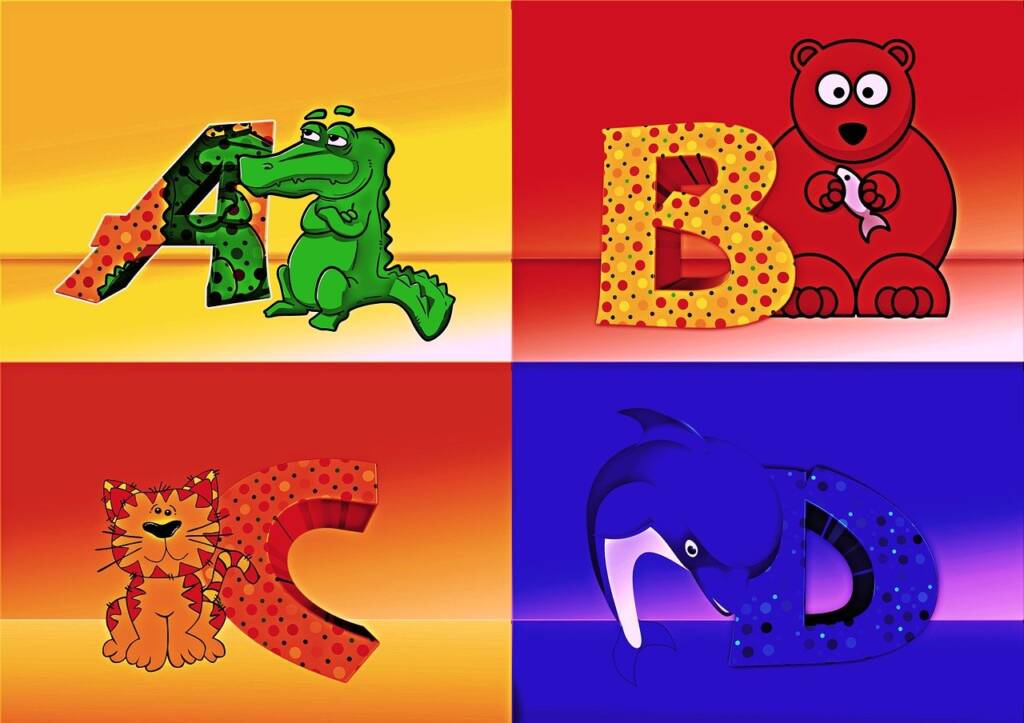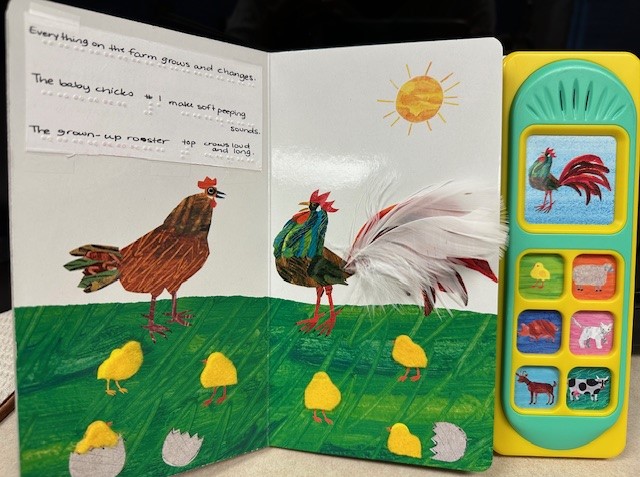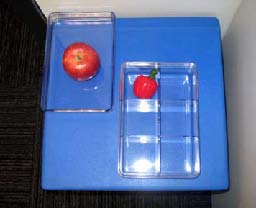Working with children with varying degrees of visual impairment can present challenges in adapting books. This “Polar Bear Polar Bear, What Do You Hear?” adaptation is both tactile and colorful with little visual clutter. The book is also translated into braille for braille readers. This adaptation can be put together in activity folders or used with All-In-One boards.
Tactile Cards-Materials such as faux fur, rubber, foam, felt, buttons, and feathers were glued to pieces of plastic poster board with Velcro added to the back of each card. Plastic poster board was used to increase durability of cards.
Shadow matching cards and picture sequence cards were downloaded from the Making Learning Fun website. Pictures were glued to pieces of plastic poster board and Velcro added to the backs. http://www.makinglearningfun.com/themepages/PolarBearPolarBearPrintables.htm
While reading the story, introduce the animals one at a time using the tactile cards. Each card represents one animal.
Velcro on the back of each card allows the cards to be used on All-in-One boards. Cards are labeled with print and braille labels indicating which animal it represents. Tactile cards can also be used teach students about each animal and what they might feel like.
A shadow matching activity of each animal develops abstract shape recognition; as the child matches the color animal to the shadow animal.
Story sequencing activities can be done with either the tactile cards or picture cards.
